

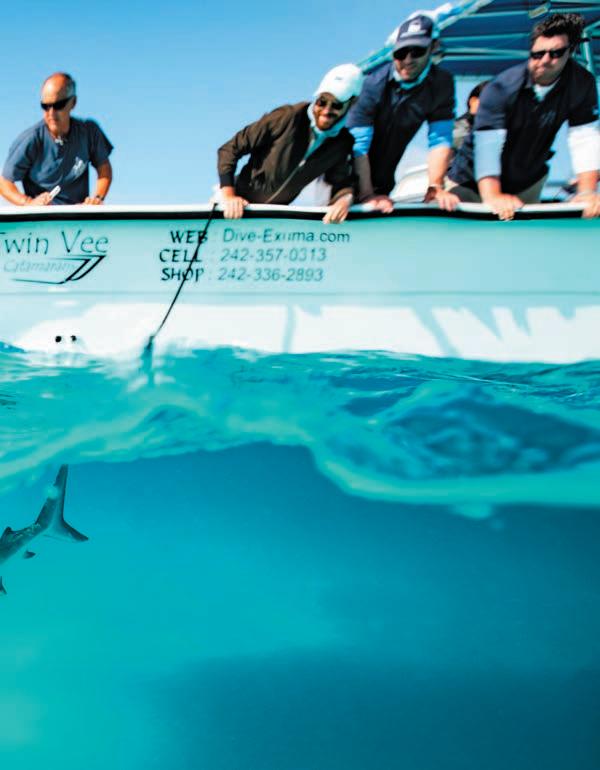






Beneath the Waves is dedicated to promoting ocean health and using science and technology to catalyze ocean policy, with a focus on shark conservation and marine protected areas. Our research creates the conservation evidence needed to inform broad-scale and region-specific ocean policies, while also providing solutions to new or emerging conservation challenges.
Beneath the Waves has made a strategic decision to focus its programs and resources in the following timely conservation areas:
Collecting baseline data on the importance of marine habitats and how keystone species use them, and working with governments and partners to integrate this information into legislation to advance ocean protection.
Filling critical knowledge gaps to bolster arguments for local, national, and international conservation plans, and management for sharks and their prey.
Mapping biodiversity throughout the largest ecosystem on our planet ahead of harmful extractive activities.
Collecting baseline data on the marine life and habitats that provide critical ecosystem services for regulating global climate.

We will be successful if the following is accomplished on the species and regions in which we work:
Increased establishment of marine protected areas and reserves
Sustaining and strengthening of existing protected areas
Improved conservation status and sustainable management of marine resources
Increased production of science to accelerate discovery in our oceans
Beneath the Waves is nonprofit, tax-exempt charitable organization under Section 501(c)(3) of the Internal Revenue Code.

No one could have ever predicted what 2020 would bring us. Underscored by the rise and spread of the global COVID-19 pandemic, 2020 represented for many a year of challenges and obstacles. Uncertain about the economic effects of the pandemic on the nonprofit sector and the ocean space, in the early days I spoke with dozens of colleagues, mentors, business leaders, and advisors. The consistent takeaway was to not worry or fear what we could control, but instead to embrace the momentum we had, and trust the things and activities that had been working for us prior.
Despite some minor logistical setbacks, in 2020 Beneath the Waves continued to grow and innovate, including the relaunching of the brand after 5 years of learning, upgrading our team of advisors and Board Members, intelligently expanding our research into new countries, and launching numerous exciting new partnerships and sponsorships. In 2020 we also had our best fundraising year to date - and achieved our second year eclipsing $1M in revenue. These accomplishments were driven by our existing donors stepping up to sustain or strengthen their commitments, and earning the support of several new, sophisticated Foundations, philanthropists, and competitive grants.
Our research is taking us to places I never thought possible. By synthesizing results from our long-term shark monitoring programs, we have made new discoveries within the emergent field of blue carbon, revealing new biodiversity hotspots of global significance and pushing the implications of our work into the climate change arena. Our deep-sea research has continued to provide many exciting ‘firsts’ for marine science.
We’ve doubled down on our commitment to building capacity for marine conservation in the Greater Caribbean, through launching the Caribbean Shark Coalition and expanding our work to Turks and Caicos and The Dutch Caribbean, with more work planned for Grand Cayman, and Bermuda. And most critically, we’re frequently asked to share our science and expertise with governments and government officials in the places and regions we work.
People have asked me how we were able to grow our programs in 2020, how we deployed teams for field expeditions, and how our communications continuously streamed out results and content from our initiatives. My answer to them brings in one of my favorite quotes, from Franklin D. Roosevelt: “A smooth sea never made a skilled sailor.” Resilience is at the core of our team, from overcoming myriad logistical challenges across the over 30 expeditions we’ve conducted, or finding ways to remain productive, efficient, and relevant year-over year as a small non-profit.
I am proud of our team and thankful to those around us. This inclusive, diverse, and hardworking network continues to impress me and serves as a constant motivating force as we move forward.

CEO & CHIEF SCIENTIST
§ Austin Gallagher, PhD FOUNDER, CHIEF SCIENTIST
§ Jamie Fitzgerald MANAGING DIRECTOR
§ Jason Halvorsen DIRECTOR OF MARINE OPERATIONS
§ James Sternlicht
§ Kristin Hettermann
§ Jason Halvorsen
§ Andi Cross
§ Don Donovan
§ Filipe DeAndrade
§ Tony Gilbert
§ Jeff Todd
§ Keith Myrick, MD
§ Daniel Hettwer
§ Mike Hudson
§ Joe Romeiro
§ Sami Kattan DIRECTOR OF DIGITAL MEDIA
§ Andi Cross DIRECTOR OF STRATEGY
§ Carlos Duarte, PhD
§ Rashid Sumaila, PhD
§ Diva Amon, PhD
§ Tadzio Bervoets
§ Austin Gallagher, PhD
§ Rosemary Mann
§ Malik Adunni
§ Wendy Benchley
§ Steve Feron
§ Jeff King
§ Jeffrey Pankey
§ Brennan Phillps, PhD, SENIOR RESEARCH ASSOCIATE
§ Nicholas Payne, PhD, SENIOR RESEARCH ASSOCIATE
§ Shaili Johri, PhD, SENIOR RESEARCH ASSOCIATE
§ Erica Staaterman, PhD, SENIOR RESEARCH ASSOCIATE
§ Camrin Braun, PhD, SENIOR RESEARCH ASSOCIATE
§ Judith Bakker, PhD, SENIOR RESEARCH ASSOCIATE
§ Oliver Shipley, PhD, SENIOR RESEARCH ASSOCIATE
§ Brendan Shea, MSc, RESEARCH ASSOCIATE
§ Christine de Silva, RESEARCH ASSOCIATE
§ Lauren Benoit, RESEARCH ASSOCIATE
§ Cali Capela, RESEARCH ASSOCIATE
§ Lea Breistroff, RESEARCH ASSOCIATE
§ Alyssa Dorfman, RESEARCH ASSOCIATE
§ Enrique Quintero, MARINE TECHNICIAN
§ Robert Carmichael, MARINE TECHNICIAN
§ Diego Camejo, MANAGER OF DIGITAL PROJECTS

THE BRAND —an important inflection point following over five years of learning and development since our incorporation in 2014. Our objective was to present an evolved mission, bolder and more sophisticated aesthetic, and a more inclusive experience for the team and those the organization aligns with. The goal of the refresh was to ensure the brand communicated a mindset and commitment to forming long-term partnerships in and out of the ocean conservation and science spaces.
Beneath the Waves focuses on doing the science that is needed to collectively protect our ocean and its inhabitants. Over time, the organization’s efforts have evolved to focus on marine protected areas and conservation hotspots. We are positioned as an exciting hybrid between a cutting-edge, non-profit research institute, and a platform for innovation in technology, media, public-private partnerships, and professional development. Our brand re-launch was underpinned by an immersive new website, strategic team member additions, and a new, in-house inclusive educational community called ‘The Crew.’ This re-launch was also timely, as the UN has declared the period of 2021-2030 the “Decade of Ocean Science,” which will see a dramatic increase in the production of science to inform newly established global conservation targets.
We measure our impact in a variety of ways—from our time in the field, our output generation, outcomes such as how we impact or inform policy, and our ability to reach the masses with our work.



Following are some of the most significant highlights from this year.
Global Call-to-Action for Large-Scale Marine Protected Areas:
We started 2020 with a letter in Science calling for the implementation of large-scale marine protected areas in the Caribbean. A first for this prestigious journal, the publication was covered by global media outlets and has led to improved data sharing, policy briefs, and collaboration with multiple Caribbean nations and international regulatory bodies such as the United Nations Environment Programme and IUCN Caribbean. We also began working directly with the Turks and Caicos government on marine protected area legislation.
Caribbean Shark Coalition:
Alongside our partners from the Dutch Caribbean Nature Alliance, we founded the Caribbean Shark Coalition (CSC), a collection of member experts from NGOs, local communities, intergovernmental organizations and governments, academia, and policy institutes advancing the study and conservation of sharks and rays in the Greater Caribbean. The CSC will foster collaboration in shark and ray research, policy, will build capacity for conservation and new science among stakeholders in the region, and will provide opportunities for knowledge transfer and data synthesis.
Southern Tide:
Continuing our drive to foster innovative business models to support ocean conservation, we partnered with premium coastal apparel brand Southern Tide, bringing cross-sector recognition to ocean conservation and sustainability. In addition to their sponsorship, we created multiple high-impact media pieces to raise awareness and drive engagement for our conservation efforts, collaborated on a limited-edition line of co-branded apparel, and worked together in the field in both The Bahamas and Nantucket, Massachusetts (USA).
The Crew:
Mid-pandemic, we created an online social network and mentorship program to engage virtually with our global audience and develop meaningful relationships with our supporters. Through this platform, we’ve provided 1-1 mentorship sessions for over 300 global members—many of whom are interested in careers in marine science or learning about how to get involved. Through exclusive updates on research and discoveries, opportunities to engage in conservation efforts, and direct access to our team and our collaborators in the conservation space, The Crew is an innovative way to provide meaningful impact to the future generation.
This year, BTW was awarded competitive grants to advance our conservation programs from the The Volgenau Foundation, Waitt Foundation, Disney Conservation Fund and National Geographic. These grants will provide BTW with capital, mentorship, and network connectivity for our marine protected area research and impact efforts in The Atlantic Ocean and Caribbean.
Through our collaboration with our scientific advisor Dr. Diva Amon, we also became a member of the Deep Ocean Stewardship Initiative (DOSI)—a global network of deep-sea biologists and experts sharing resources to improve the management of our deep oceans. Collectively, these partnerships will help us amplify our efforts and provide the critical resources to advance our work.
Press Outputs:
Over 20 major articles published about our research from international news outlets, in print and online.
Owned Media:
Social media posts on Instagram reached ~25,000 accounts per week, resulting in ~ 2.7 Million impressions per year.
Speaking:
Members of our team delivered 32 presentations and keynote lectures to universities and groups around the world, including hosting global panels with Rolex and The Explorer’s Club.
Film & TV:
Our research was featured on large international networks such as Discovery Channel and National Geographic, for Shark Week and SharkFest, respectively. These shows aired in summer 2020 to millions of viewers, providing significant exposure for education around our work to the general public.
F Discovery Channel: Tiger Shark King (August 2020), Adam Devine’s Secret Shark Lair (August 2020)
F National Geographic: Sharks of the Bermuda Triangle (July 2020)

MAJOR RESEARCH EXPEDITIONS COMPLETED
KM 2 OF EXISTING PROTECTED AREAS MONITORED
CONSERVATIONIST
ON THE WATER DOING RESEARCH


PROGRAM FOCUS:
Referring to any of the carbon dioxide removed from the atmosphere by the world’s ocean ecosystems, blue carbon is typically thought of in terms of mangroves and saltmarshes, algae, and seagrasses. Seagrass, in particular, has recently become recognized globally for its ability to sequester and store massive amounts of atmospheric carbon dioxide (about 17% of all annual CO2 pulled into the ocean), playing a profound role in regulating the global climate.
This year, we recognized the importance of blue carbon to our organization’s ongoing mission, through a series of opportunistic discoveries — thus making blue carbon our newest, and arguably most exciting initiative.
Through our historical long-term monitoring of tiger sharks in The Bahamas, we compiled multiple sources of scientific datafrom short and large-scale movements derived from electronic tags, to blood samples inferring diet, and even camera tags attached to the sharks. The different data sources all told the same story: our tiger sharks were preferentially selecting seagrass habitat, and they were repeatedly returning to the same seagrass habitats. While our tiger sharks guided us into the discovery of massive amounts of dense seagrass habitat in shallow seas of The Bahamas, we then used satellite images of Earth to map the total space occupied by seagrass in the region. The results blew us away.
Led in collaboration with Dr. Carlos Duarte, world authority on seagrass, and pioneer of the term ‘blue carbon’ and BTW Science and Policy Advisor, we spent the second half of 2020 quantifying the scale and scope of this underwater prairie—which we now believe is the largest in the world by a large margin. A massive discovery, these findings have major implications for resilience and conservation in The Bahamas, the Greater Caribbean region, and worldwide.


Seagrass beds, like this one in The Bahamas, sequester and store massive amounts of atmospheric carbon dioxide, playing a profound role in regulating the global climate. Photo by Cristina Mittermeier

With the support of The International SeaKeepers Society, we returned to The Bahamas in late 2020 to conduct a pilot seagrass expedition among new research sites, assessing the region’s seagrass health with diver and drone surveys. We are continuing to refine and add new methodologies as we explore and map the total area, and have launched an impactful expedition series and push for designation of this area as a World Heritage Site, alongside a dynamic fundraising campaign. Through new partnerships, technology, and collaborations, we have big plans for further development of this initiative in 2021.


Dr. Austin Gallagher takes measurements of the root system in a dense seagrass bed in The Bahamas. The roots and rhizomes of seagrasses absorb and store nutrients, and help to anchor the plants and sediment in place. Photo by Cristina Mittermeier

As a company with a deep affinity for the sea, Southern Tide has a history of aligning with oceanminded organizations. Our work at Beneath the Waves was a natural fit for their next partnership— what we expect will be the biggest and most impactful yet. Southern Tide continues to help us move the needle in ocean conservation by providing us with the platform and resources to connect with new audiences, collaborating in engaging and dynamic media, and creating the Beneath the Waves x Southern Tide collection, which will launch in 2021.
Our 2020 Capsule is an exciting first look at our work together, which our team has worn in the field and in the boardroom throughout the year—from the Caribbean to the North Atlantic.







The Southern Tide team joined us this summer for a weekend tagging blue sharks off of Nantucket, MA.

DISCOVERY FOCUS:
IN 2020, OUR DEEP-SEA RESEARCH SPANNED FROM THE TONGUE OF THE OCEAN IN THE CARIBBEAN TO THE NORTHEAST CANYONS AND SEAMOUNTS OF THE EASTERN NORTH ATLANTIC. Thanks to the engineering and guidance of Dr. Brennan Phillips, as well as through the support of Discovery Channel’s Shark Week, we now have two custom-built deep-sea drop-camera rigs.
Designed to withstand depths of 6,000 feet or deeper, these rigs have become an essential part of our suite of research tools. Using GoPro cameras and an LEDlight system, we are able to spy on remote and extreme environments for hours at a time, with amazing results and discoveries.
In 2020, our highlights included:
Gulper Sharks:
These sharks, residing in the Tongue of the Ocean, are listed as vulnerable, due to pressure from fishing - particularly the harvest of squalene.
Giant Isopods:
These important scavengers - cycling nutrients, ocean and climate clean-up - are found on the seafloor at 1800 meters.
Invertebrates:
Alien-like, this deep-sea creature is actually a colony rather than an individual organism. Emitting a faint blue light, this deep-sea dweller uses bioluminescence to attract prey.
This technology helps to non-invasively fill critical knowledge gaps about our ocean. With each deep-sea expedition, we are learning more about the sharks, marine life, and habitats that we study--already, we have observed new interactions and depth range extensions for multiple species.
We anticipate that our use of this technology will continue taking our team to new depths, with the real possibility of describing new species or identifying new biodiversity hotspots.



Dr. Austin Gallagher and Lauren Romeiro lower a deep-sea dropcamera rig into the Atlantic Ocean, 300 miles offshore of New England. A 3-day expedition with Joe Romeiro and the team from 333 Productions, this research was the first leg of a long term study documenting the deep-sea and pelagic megafauna around the Northeast Canyons and Seamounts.

Our custom deep-sea drop-camera rigs are designed by Dr. Brennan Phillips and the team at Juice Robotics, to help us efficiently and cost-effectively monitor species and habitats beyond our reach. Perfectly weighted, these rigs return to the surface using acoustic signals.
PROGRAM FOCUS:
DESPITE THE LOGISTICAL CHALLENGES THAT THE PANDEMIC PRESENTED TO INTERNATIONAL TRAVEL, we were nevertheless able to successfully launch an important new project in the Turks and Caicos Islands, facilitating nationwide baseline surveys of shark and ray abundance and diversity to support proposed marine protected area legislation.
This new program was a noteworthy milestone for our team, marking the start of our ongoing expansion in the Greater Caribbean region, and is one of many steps we are taking to help ensure that the region is represented amongst international commitments to protect 30% of the world’s oceans by 2030. This program was initially catalyzed through a request from the Turks and Caicos Government, inviting our organization to help better understand the scope of their populations of these threatened marine species, and to begin demonstrating the potential benefits of protecting them.
Working in collaboration with the Department of Environment and Coastal Resources of the Turks and Caicos Islands, and our operational partners Big Blue Collective, we successfully completed two major expeditions, focusing on the non-invasive monitoring of sharks and rays in shallow and deep water habitats. It has been exciting for us to be able explore these pristine environments while actively participating in protecting them through collaborative science and expert consultation.
These expeditions have provided baseline information for our scientists to continue exploring the region in 2021, where we will add further methodologies and hope to identify key sites for shark and ray activity.


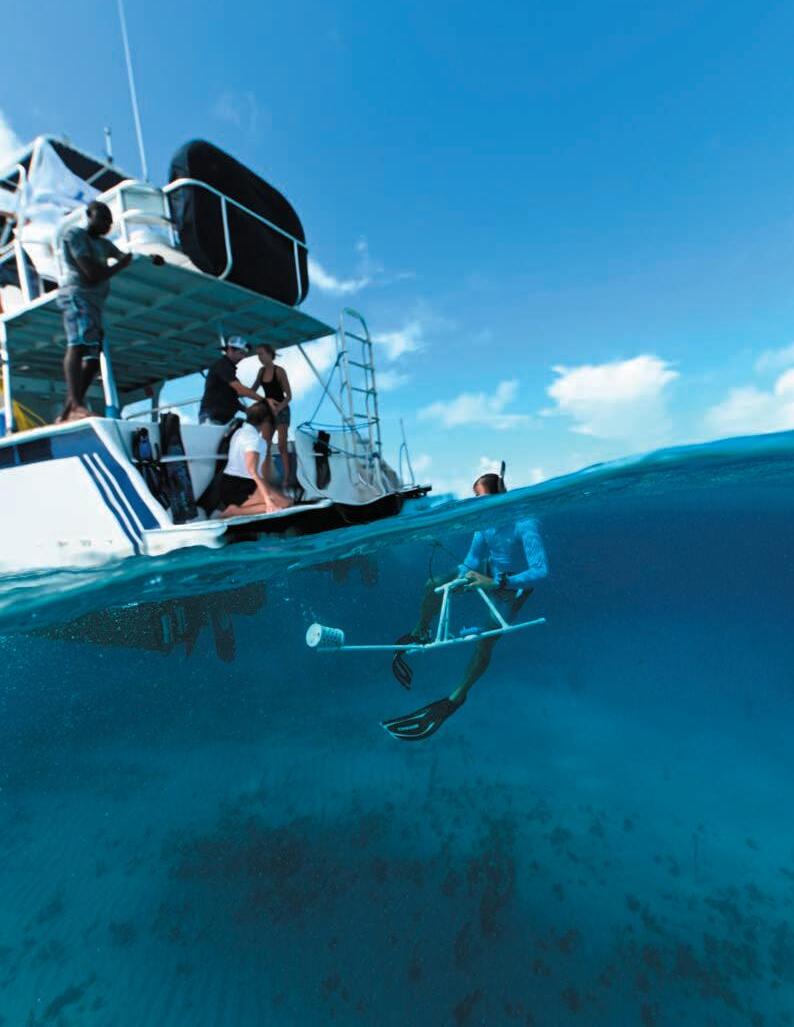
The team places a BRUV— Baited Remote Underwater Video station—on a shallow reef site off of West Caicos, with assistance from Big Blue Collective. Through this non-invasive monitoring technique, we have been able to document multiple shark, ray, and fish species around the islands, creating a baseline understanding of the biodiversity and abundance of these waters during our population surveys.

In total, we conducted 40 shallow BRUV surveys, 25 deep BRUV surveys, and collected 45 water samples for environmental DNA analysis. We have seen a healthy abundance of over 100 individual sharks, composed of Caribbean reef, blacknose, lemon and nurse sharks, as well as sightings of ray species on nearly 50% of our BRUVs. We have also detected a strong correlation between grouper species with sharks, across many reef sites.
We have been focused on collaboration and data sharing of our findings to the Turks and Caicos Government to support and further inform the proposed legislation to create a nation-wide shark and ray marine protected area. We are confident that this program will continue to yield promising results and will lead to the successful creation of the proposed marine protected area in the coming year.


Mating turtles, pods of dolphins, and even humpback whales are some of the many animals our team has encountered while conducting research in the Turks & Caicos Islands.


My passion for the ocean was born from going to the coast as a young child. I used to love splashing around in rock pools, lifting up rocks and scrutinizing the animals that lived there fascinated by every new discovery I made, and amazed that so much life existed in the sea. Ever since then, I always stayed extremely connected with the ocean, and pursuing a degree in marine biology allowed for my passion to really take off. Going from tide pools to the open ocean, my research interests now lie in the movement and feeding dynamics of marine predators such as how large predators connect marine ecosystems.
Aside from working with some amazing animals in absolutely stunning locations, one of my favorite things is working with people from such diverse backgrounds. BTW brings together not only scientists, but content creators, philanthropists, and visionaries, a dynamic and passionate group that makes every expedition extremely fun and educational. And for me personally, BTW has provided an exceptional network of mentors, advisors, and collaborators in the scientific space. I am incredibly grateful for the support and guidance from BTW as I have progressed in my career from master’s student to post-doctoral researcher, and look forward to continuing my research as part of this robust and diverse team.
The ocean has always enchanted me. When I was a child summering in Stonington, Connecticut, it was the pleasure of swimming and surfing and, as a teenager, I discovered the thrill of competitive sailing, testing my skills with the 19 ft. Lightning’ (dinghy) and then, as a young adult, the high performance, Bermuda rig 420s. After Peter and I married we discovered the excitement of scuba diving and enjoyed excavating shipwrecks in Bermuda with renowned, marine archaeologist and historian, Teddy Tucker.
The ocean became central to my life after Peter wrote Jaws. ABC American Sportsmen and National Geographic asked Peter to go on expeditions to explore and write about sharks and the seas. I accompanied him on many trips and was captivated by the other worldly beauty of the ocean below the surface and horrified by the devastation wrought by shark finning, pollution, and huge factory ships strip-mining the ocean of fish. Peter and I worked for decades to help change perceptions about sharks and became public advocates for sharks and ocean issues. After Peter passed away in 2006, I dedicated all of my time on marine conservation and strengthening ocean policies by supporting organizations that are working on solutions to bring back the health of our seas globally.
I’m thrilled to be part of Beneath The Waves. I greatly admire Dr. Gallagher and his team’s many talents, and the variety of people, skills, and perspectives on the Board. BTW is nimble, agile and on the cutting edge of scientific work that is connected to real world action—protecting sharks and supporting marine protected areas. This is a strategy I strongly support. I’m also excited to be part of a group that is working in the Atlantic Ocean, as I think it desperately needs attention! I look forward to diving with the team and the sharks in the Bahamas and the Turks sometime very soon!


§ Gallagher AJ, Amon DJ, Bervoets T, Shipley ON, Hammerschlag N, Sims DW. (2020) The Caribbean needs big marine protected areas. Science 367: 749.
§ McDonnell LH, Jackson T, Burgess GH, Phenix L, Gallagher AJ, Albertson H, Hammerschlag N, Browder J (2020). Saws and the city: smalltooth sawfish (Pristis pectinata) encounters, recovery potential and research priorities in urbanized coastal waters off Miami, Florida. Endangered Species Research 43: 542-553.
§ Moorhead, SG, Gallagher, AJ, Merly, L, Hammerschlag, N. (2020) Variation of body condition and plasma energy substrates with life stage, sex, and season in wild‐sampled nurse sharks Ginglymostoma cirratum. Journal of Fish Biology 1-14.
§ Shea BD, Benson C, de Silva C, Donovan D, Romeiro J, Bond ME, Creel S, Gallagher AJ (2020) Effects of exposure to large sharks on the abundance and behavior of mobile prey fishes along a temperate coastal gradient. PLoS ONE 15(3): e0230308
§ Phenix LM, Tricarico D, Quintero E, Bond ME, Brandl SJ, Gallagher AJ (2020) Evaluating the effects of mobile predators on prey behavior across subtropical coastal marine habitats. Ecology and Evolution 9:13740-13751.
DEEP-SEA CONSERVATION & BIODIVERSITY
§ Howell KL, Hilário A, Allcock AL, Bailey D, Baker M, Clark MR, Colaço A, Copley J, Cordes E, Danovaro R, Dissanayake A, Escobar E, Esquete P, Gallagher AJ, Gates AR, Gaudron SM, German CR, Gjerde K, Higgs ND, Le Bris N, Levin LA, Manea E, McClain C, Menot L, Mestre NC, Metaxas A, Milligan R, Muthumbi AWN, Narayanaswamy BE, Ramalho SP, Ramirez-Llodra E, Robson L, Rogers AD, Sellanes J, Sigwart J, Sink K, Snelgrove PVR, Stefanoudis PV, Sumida PY, Taylor ML, Thurber AR, Vieira R, Watanabe HK, Woodall LC, Xavier JR (2020) A decade to study deep-sea life. Nature Ecology and Evolution 5 : 265-267.
§ Howell KL, Hilário A, Allcock AL, Bailey D, Baker M, Clark MR, Colaço A, Copley J, Cordes E, Danovaro R, Dissanayake A, Escobar E, Esquete P, Gallagher AJ, Gates AR, Gaudron SM, German CR, Gjerde K, Higgs ND, Le Bris N, Levin LA, Manea E, McClain C, Menot L, Mestre NC, Metaxas A, Milligan R, Muthumbi AWN, Narayanaswamy BE, Ramalho SP, Ramirez-Llodra E, Robson L, Rogers AD, Sellanes J, Sigwart J, Sink K, Snelgrove PVR, Stefanoudis PV, Sumida PY, Taylor ML, Thurber AR, Vieira R, Watanabe HK, Woodall LC, Xavier JR (2020) A blueprint for an inclusive, global deep-sea Ocean Decade field programme. Frontiers in Marine Science 07-584861.
§ Staaterman, E., Gallagher, A. J., Holder, P. E., Reid, C. H., Altieri, A. H., Ogburn, M. B., Rummer, J. L. and Cooke, S. J. (2020). Exposure to boat noise in the field yields minimal stress response in wild reef fish. Aquatic Biology 29: 10.3354.
Our research was covered by 10 major press outlets in 2020, generating millions of impressions worldwide.
Below are a sample of some of the media outlets that covered our work:










FOUNDATIONS & TRUSTS
§ Wanderlust Fund
§ Pacific Treasure Foundation
§ King Family Trust
§ The Volgenau Foundation
§ Sternlicht Family Foundation
§ Saad Hillsdale Trust
§ Hotel Connections, Inc.
§ Waitt Foundation
§ Mary O’Malley and Lupo Dion Trust
§ The Charles Engelhard Foundation
§ WCPD Foundation
§ De Silva Family Foundation
§ The Angel Foundation
§ Rockefeller Philanthropy Advisors
§ Karo Family Trust
§ Waitt Foundation
§ National Geographic
§ Disney Conservation
§ Thayer Academy
CORPORATE SPONSORS
§ Southern Tide
§ Grand Isle Resort and Spa
§ Lush
§ GIV Bahamas
§ Cape Clasp
§ 36Pix
§ JDL, Inc
§ GoPro
§ Paralenz
§ IMV Imagining
OPERATIONAL PARTNERS
§ International Seakeepers Society
§ Paul Hastings, LLC
§ Figment Design
§ Global Sub Dive
§ Dive Stuart Coves
§ Dive Exuma
§ The Exuma Foundation
§ M/Y Marcato
§ Fleet Miami
§ Goose Hummock Shops
§ Bahamas Dive Guides
§ Big Blue Collective
KEY INSTITUTIONAL PARTNERS
§ The Nature Conservancy Caribbean
§ Bahamas National Trust
§ Bahamas Dept. Marine Resources
§ Turks & Caicos Dept. of Environment
§ Northeastern University
§ University of Miami
§ University of Rhode Island
§ Stony Brook University
§ Florida International University
§ Trinity College in Dublin
§ University of Washington
§ Deep-Sea Conservation Coalition
§ Deep-Ocean Stewardship Initiative
§ The Oxygen Project
KEY MEDIA PARTNERS
§ Discovery Channel
§ National Geographic
§ Nomad Creative
§ Diego Camejo Studios
§ Figment Design
§ Comfort Theory
$1,064,419
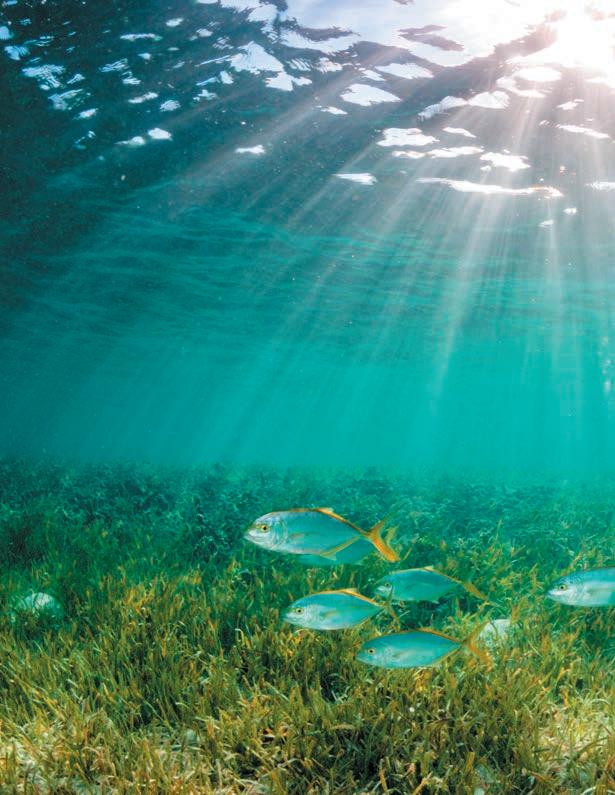

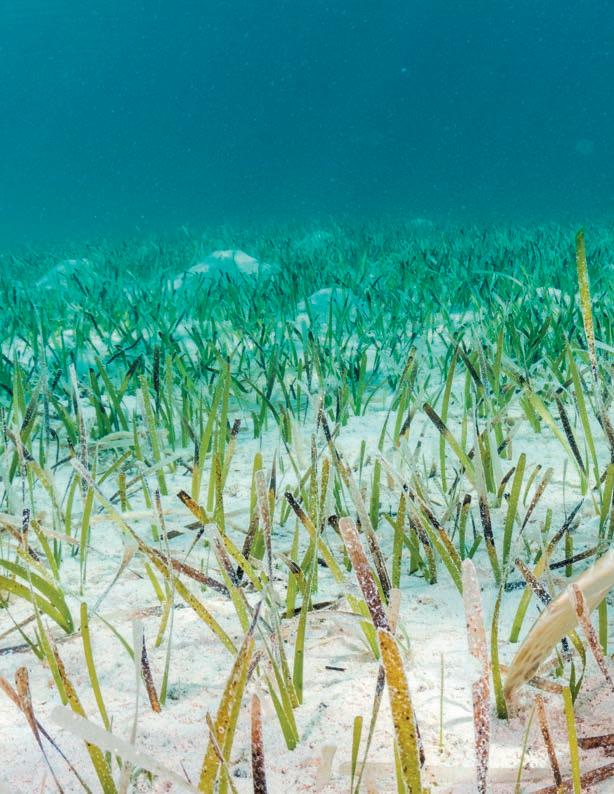
Beneath the Waves
Annual Report - Cover 4 Pages + Text 32 Pages
Annual Report - Cover 4 Pages + Text 32 Pages Quantity: 100 2.2
This report is produced with FSC® certified, 100-percent postconsumer recycled paper stock and printed using vegetable-based ink. It is printed by Hemlock, a carbon-neutral Green-e printer. As a result, the following resources have been saved:
0.6520.3 2.2 279
POUNDSPOUNDS 0.6 52 0.3 2.2 279
By using paper made with 100 recycled content, BTU
By using paper made with 100% post-consumer recycled content, the following resources have been saved. gallons fully grownmillion BTU poundspounds
Environmental impact estimates were made using the Environmental Paper Network Paper Calculator Version 4.0 For more information visit www.papercalculator.org
For more information visit www.papercalculator.org


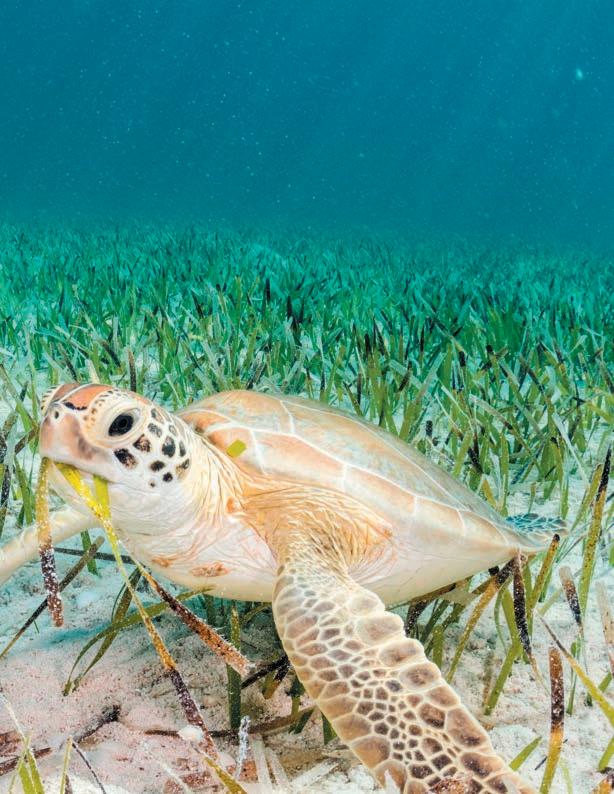

If you would like to support our 2021 programs, please point your cell phone camera at the QR code above.

Hanan Atia
Diego Camejo
Shane
Wilson Haynes
Sami Kattan
Cristina Mittermeier
André Musgrove
Philip Shearer